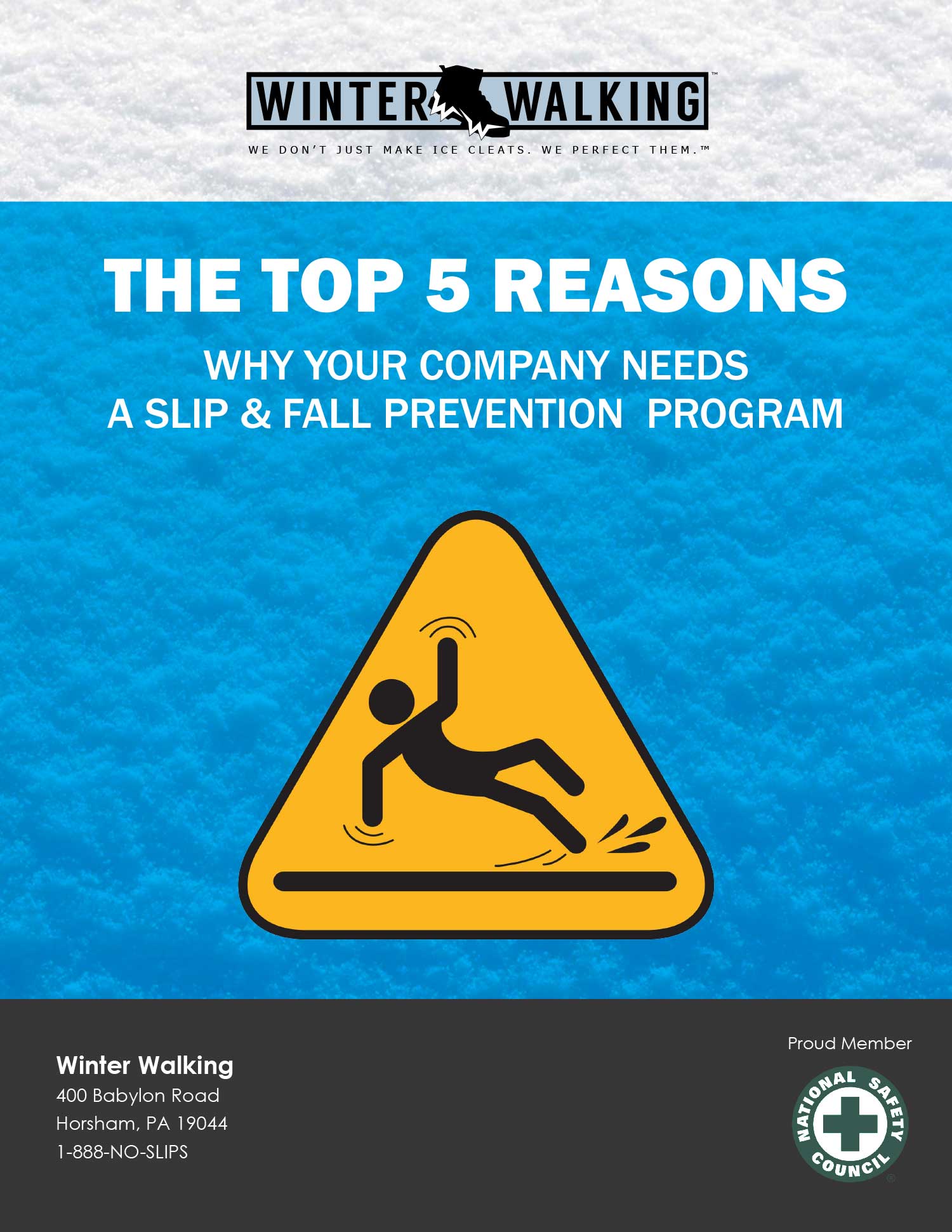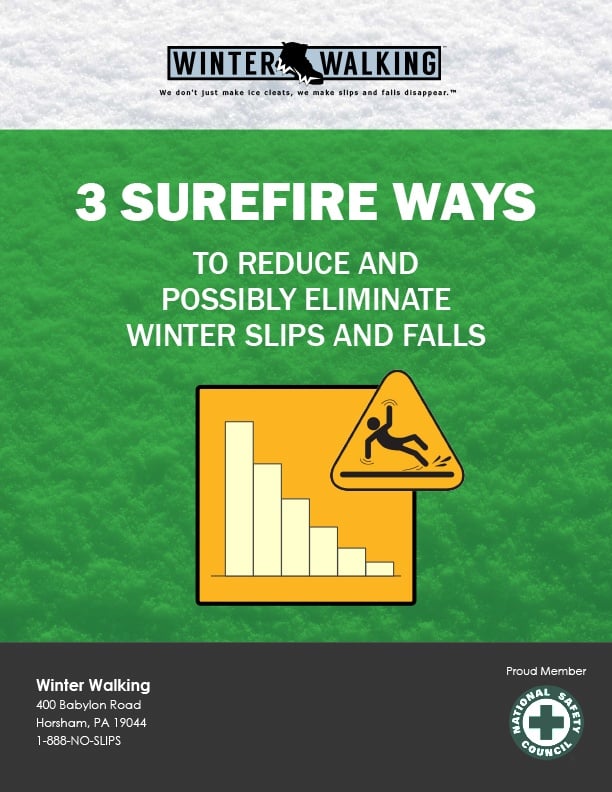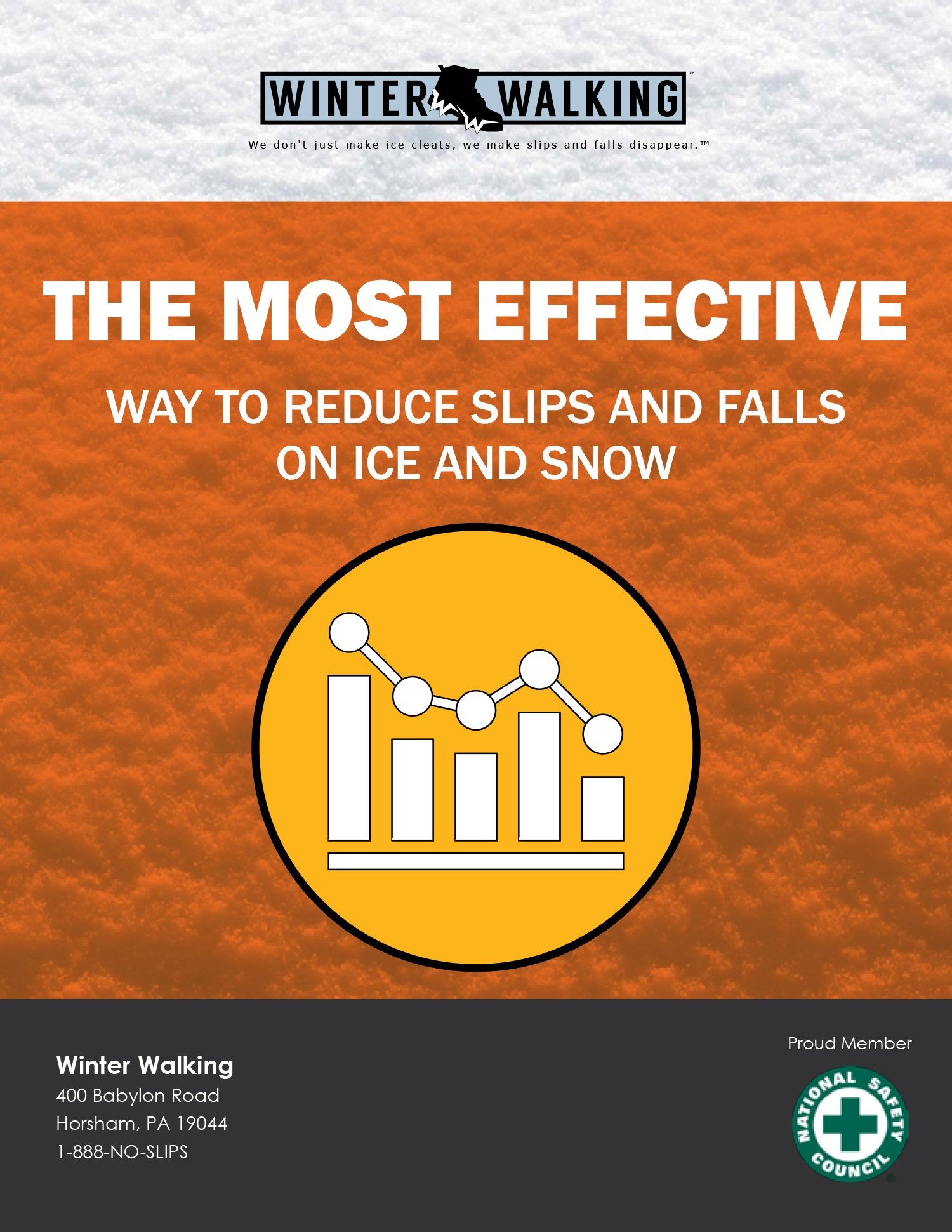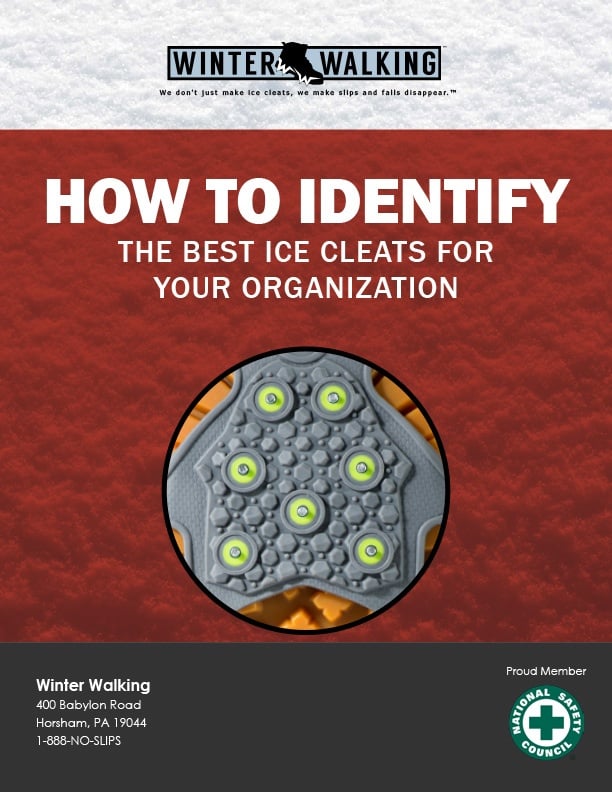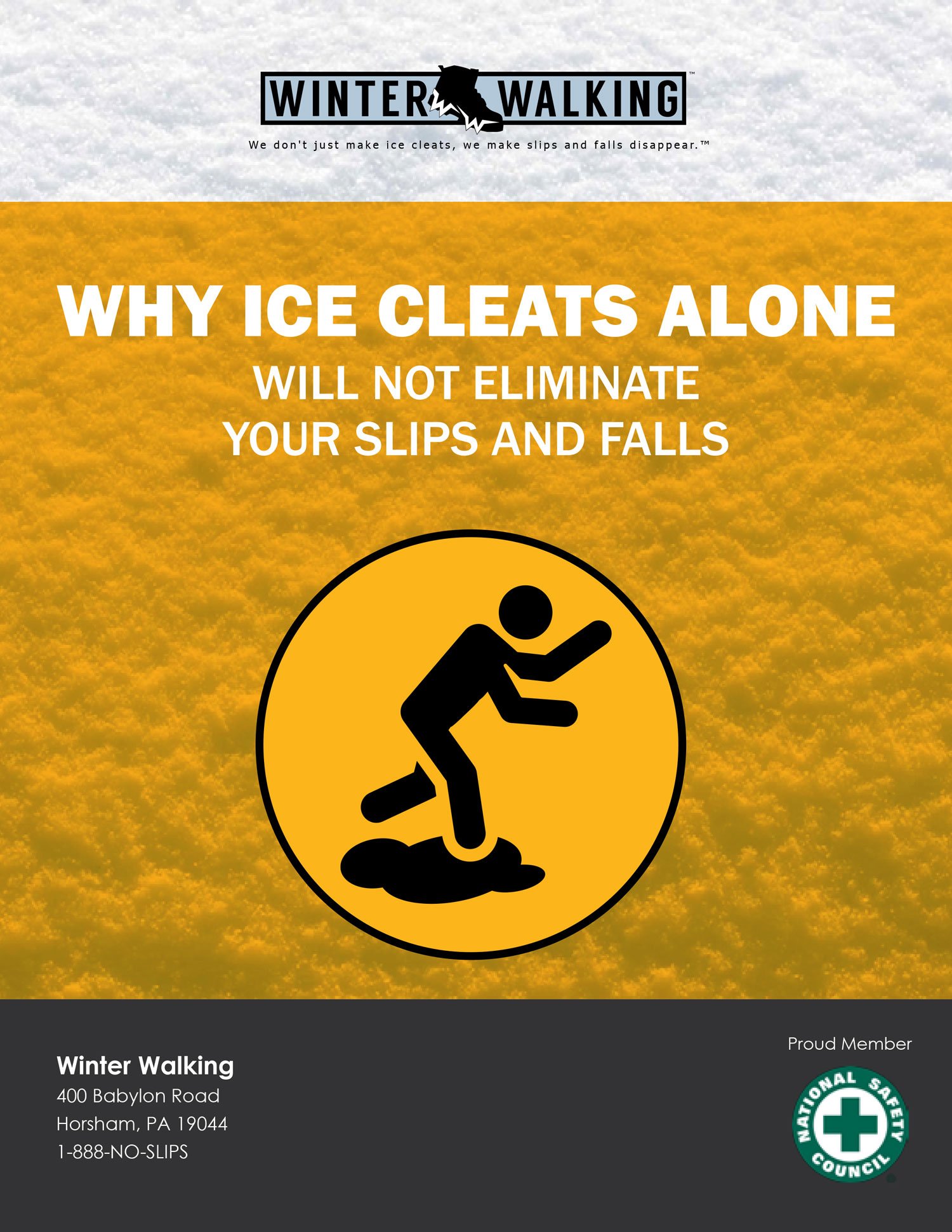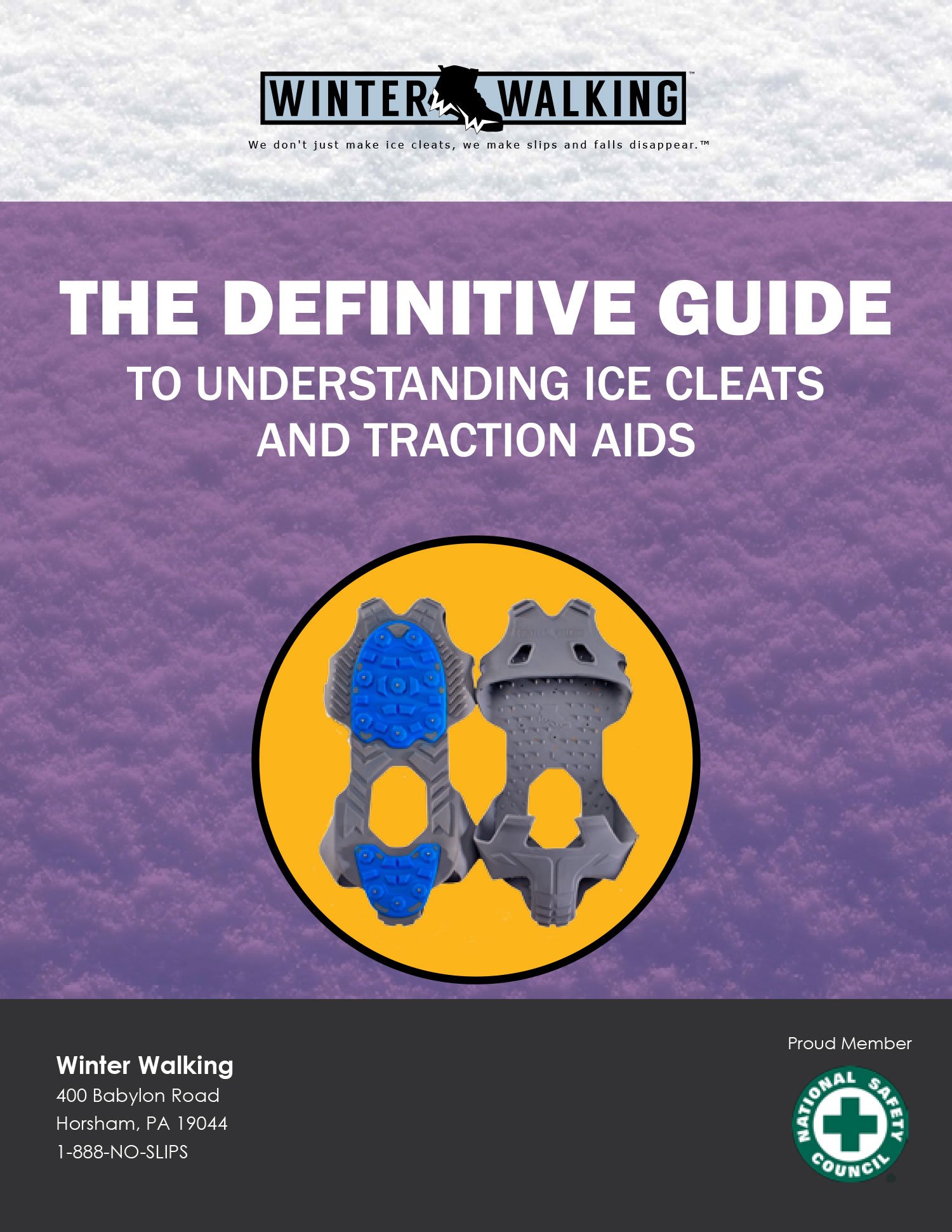It’s a question we’ve heard more than a few times. How do we answer it? Look at it this way:
If you typed the phrase “ice cleats” into Google back in 2010, the search engine would give back around 418,000 results. Trust us on this number: it’s our job to run that specific search.
Try the same search today, and you’ll get back more than 10 million results. What does this number tell us?
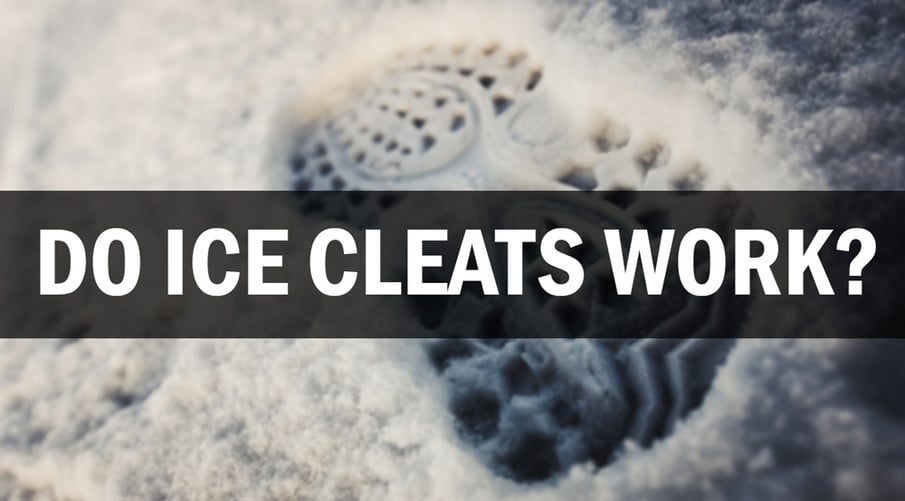
For one thing, ice cleats have become much more popular than they were 10 or even five years ago. We would argue that the marketplace for ice cleats would not have expanded this way if the product didn’t work. All the same, the question “Do ice cleats even work?” can’t be answered that simply.
Dig deeper into the world of ice cleats and the 10 million search results, and you’ll soon discover two chief obstacles that cause safety professionals to hesitate when they consider investing in ice cleats.
- Most ice cleats are good at just one thing: Increasing traction on ice and snow.
- Not all ice cleats are created equal, yet there are no objective guidelines to help you understand the difference.
That’s why when you shop for ice cleats for your workplace, the question you need to ask yourself is not “Do ice cleats work?”
Instead, you should ask “What else do we need from an ice cleat besides traction?” From there, you can start asking other questions? For example:
1) Do you need to keep them on while driving or transitioning from outdoor work to indoors?
You have a dilemma at your workplace. You have workers who are in and out all day. They can’t go out without ice cleats, and wearing cleats indoors can damage your floors. Worse still, most cleats aren’t designed for indoor use, causing people who wear them to slip or skid and risk injuring themselves.
There’s a solution to this problem: transitional traction ice cleats, such as the LOW-PRO Ice Cleat. Your workers can slip these on at the start of their shift and keep them on until it’s time to punch out.
This means you won’t lose time having workers take their cleats on and off every time they need to go out/come back in. You don’t have to worry about damage to your floors, or about your workers slipping on the surface of your indoor floors.
These cleats are compact, light-weight, durable and easy to use, designed to fit over all types of boots or shoes and barely noticeable after they’re on.
Your employees will gain traction while they walk, helped along by minimally-exposed tungsten carbide studs that grip the ground in icy conditions but still have the ability to traverse clean surfaces with reduced risk of floor damage.
2) What if I have workers who spend their entire shifts outdoors?
Do your team members spend most or all of the time working outside in icy conditions? That’s where working traction ice cleats can help. These cleats are designed with two purposes in mind: aggressive-traction and industrial strength durability. These ice cleats range from lightweight, easy-to-remove versions to heavy duty, 14-inch insulated overshoe boots.
Among these ice cleats is our HIGH-PRO ice cleat, which features a patent pending dual elasticity design that helps to facilitate easy removal and application. Reduced elasticity in the sole ensures greater abrasion resistance and overall increased durability and makes it one of the best fitting ice cleats available.
3) What if my workers only need to work outside occasionally?
If you have staff members who need to work outside for just part of the day, but still need an ice cleat to keep from slipping on slick, wintry surfaces, your best bet is a walking traction cleat. These devices are easy to take off/put on while still providing aggressive traction over slippery outdoor surfaces.
Among our walking traction cleats is the Spare Spike, which gets its name from the patent-pending “spare cleat” built into the upper toe, offering a quick replacement part if a cleat goes missing. And like all of our cleats, you’ll still get an aggressive sole designed to provide traction in snow and ice.
So, do ice cleats work? Of course they do...but that doesn’t mean any ice cleat will work for you. Make a list of everything else you need an ice cleat to do and then you can figure out the more important question: Which ice cleat will work for you?
And if you’re still uncertain, don’t worry. Contact Winter Walking, and someone from our team will be happy to work with you to find a product that keeps you and your workers safe.
Thank you for reading. If you found value in this post, please consider sharing it with your LinkedIn network or simply “like” it.
Jordan Bell is the President of Winter Walking. He has been helping organizations across a wide variety of business sectors prevent workplace slips and falls in ice and snow for over 20 years. Winter Walking currently helps some of the world’s largest organizations keep their employees both safer and more productive while working outdoors in the winter season. Contact jordan@winterwalking.com or visit www.winterwalking.com.
Rate This Content:

